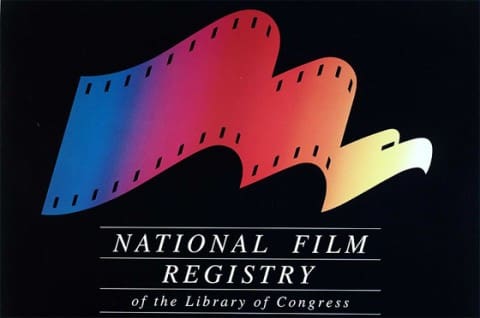

Disney’s “Bambi” & Pre-Pixar Film “A Computer Animaed Hand” by Catmull Among 25 Films Selected For Preservation by U.S. Library of Congress’ National Film Registry

“My momma always said, ‘Life was like a box of chocolates. You never know what you’re gonna get.’” That line was immortalized by Tom Hanks in the award-winning movie Forest Gump in 1994. Librarian of Congress James H. Billington today selected that film and 24 others to be preserved as cultural, artistic and historical treasures in the National Film Registry of the Library of Congress.
Spanning the period 1912-1994, the films named to the registry include Hollywood classics, documentaries, animation, home movies, avant-garde shorts and experimental motion pictures.  Representing the rich creative and cultural diversity of the American cinematic experience, the selections range from Walt Disney’s timeless classic Bambi and Billy Wilder’s The Lost Weekend, a landmark film about the devastating effects of alcoholism, to a real-life drama between a U.S. president and a governor over the desegregation of the University of Alabama. The selections also include home movies of the famous Nicholas Brothers dancing team and such avant-garde films as George Kuchar’s hilarious short I, an Actress. This year’s selections bring the number of films in the registry to 575.
Under the terms of the National Film Preservation Act, each year the Librarian of Congress names 25 films to the National Film Registry that are “culturally, historically or aesthetically” significant. “These films are selected because of their enduring significance to American culture,” said Billington. “Our film heritage must be protected because these cinematic treasures document our history and culture and reflect our hopes and dreams.”
Annual selections to the registry are finalized by the Librarian after reviewing hundreds of titles nominated by the public (this year 2,228 films were nominated) and conferring with Library film curators and the distinguished members of the National Film Preservation Board (NFPB). The public is urged to make nominations for next year’s registry at NFPB’s website (www. loc.gov/film).
In other news about the registry, These Amazing Shadows, a documentary about the National Film Registry, will air nationally on the award-winning PBS series “Independent Lens” on Thursday, Dec. 29, at 10 p.m (check local listings). Written and directed by Paul Mariano and Kurt Norton, this critically acclaimed documentary has also been released on DVD and Blu-ray and will be available through the Library of Congress Shop.
For each title named to the registry, the Library of Congress Packard Campus for Audio Visual Conservation works to ensure that the film is preserved for future generations, either through the Library’s massive motion-picture preservation program or through collaborative ventures with other archives, motion-picture studios and independent filmmakers. The Packard Campus is a state-of-the-art facility where the nation’s library acquires, preserves and provides access to the world’s largest and most comprehensive collection of films, television programs, radio broadcasts and sound recordings (www.loc.gov/avconservation/).
The Packard Campus is home to more than six million collection items, including nearly three million sound recordings. It provides staff support for the Library of Congress National Film Preservation Board, the National Recording Preservation Board and the National Registries for film and recorded sound.
Bambi (1942)
One of Walt Disney’s timeless classics (and his own personal favorite), this animated coming-of-age tale of a wide-eyed fawn’s life in the forest has enchanted generations since its debut nearly 70 years ago. Filled with iconic characters and moments, the film features beautiful images that were the result of extensive nature studies by Disney’s animators. Its realistic characters capture human and animal qualities in the time-honored tradition of folklore and fable, which enhance the movie’s resonating, emotional power. Treasured as one of film’s most heart-rending stories of parental love, “Bambi” also has come to be recognized for its eloquent message of nature conservation.
A Computer Animated Hand (1972)
Ed Catmull, co-founder of Pixar Animation Studios, renowned for its CGI (computer generated image) animated films, created a program for digitally animating a human hand in 1972 as a graduate student project, one of the earliest examples of 3D computer animation. The one-minute film displays the hand turning, opening and closing, pointing at the viewer, and flexing its fingers, ending with a shot that seemingly travels up inside the hand. In creating the film, which was incorporated into the 1976 film “Futureworld,” Catmull worked out concepts that become the foundation for computer graphics that followed.

.png)